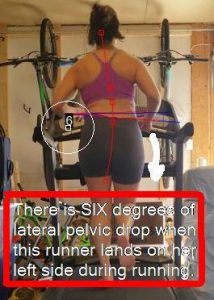Restore: the Core program
Level 2
Half Front Plank with a Reach
In all of my years doing gait analysis on hundreds of athletes from every background and talent level, all with my former partner, Dr. Kurt Strecker, one of the most important things I learned was how important THIS movement, the Half Front Plank with a Reach, is to learn and to master.
I might even argue that it could be THE single most important exercise you’ll learn in this course.
You may be thinking, that’s a pretty bold statement. And you’d be right.
Why would I make such a statement?
Experience. Years of it.
It comes back to watching and seeing so many athletes make incredible progress in every aspect of their training, with this movement.
Most were, at first, unable to do it well and “correctly” – but they stuck with it, practiced diligently and mindfully – and relentlessly, making accelerated progress.
Which is it: A correlation or a coincidence?
One very important part of our gait analysis is naturally videotaping a runner while they are running, to evaluate what is actually happening when they land on a single leg. This is arguably THE MOST important data we might collect, simply because it’s objective and really tells a lot about the runner and how he or she is moving.
One of the most important and telling elements of this video capture is looking at lateral pelvic drop. This simple metric speaks to the degree of stability of the core and hips on a single leg and also how much or little integration exists between the trunk and the hips and legs.
If you are a runner and haven’t yet watched the video: The Core: What It Is and Why It Matters, you’ll find it below. Do it now!
 Over time, as we both videotaped runners on the treadmill and recorded their relative instability on the left and right sides, we began to see a correlation between which SIDE was less stable on the treadmill during running…
Over time, as we both videotaped runners on the treadmill and recorded their relative instability on the left and right sides, we began to see a correlation between which SIDE was less stable on the treadmill during running…
…and which SIDE was more difficult to do well with this Half Front Plank with Reach.
That’s right. A clear pattern was developing. A correlation between this exercise and instability in running.
We found it individually, without discussing it together, until one day when we came upon discussing it entirely accidently.
Is it a coincidence? I think not!
It’s about patterns, not individual muscles or body parts
As you will see when you watch the instructional video, there are a number of “moving parts” with this exercise. It’s often said that the “whole is greater than the sum of the parts,” and when it comes to this movement, that is absolutely true.
In other words, it isn’t ever about a single body part or muscle.
The entire exercise is a pattern. By pattern, I simply mean a sequence of actions within muscle, connective tissue, and bone, that result in a MOVEMENT.
Running is naturally the same way. It’s not about a single part or muscle. When you look at these exercises within this course, think about that. Make the connection in your own mind to look at patterns – at holistic movement – rather than thinking of “right” or “left” side.
The video will teach you everything you need to know. So get your learn on!
I’ll say it again. This is one of the most important exercises you’ll do in this program.
- Learn every detail.
- Connect all of the dots.
- Watch yourself carefully.
- Scale it appropriately.
- Have fun with it!
